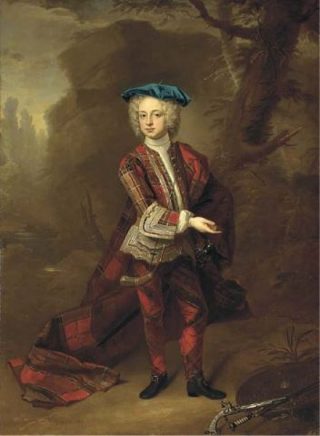Lyrics: Robert Burns
Tune: Wee Totum Fogg.
1795
Leggi in italiano
Robert Burns reports for the “Scots Musical Museum” a fragment of a popular song (revived by him based on a few traditional verses) entitled “Wee Willie Gray”. A little children song in which little Willy dresses with the bark of the willow, the petals of roses and lilies. The little Willy Gray is perhaps an elf or a jerky character of lore, or pheraps Robbie wanted to allude ironically to some person of his knowledge.
We imagine the little Willy all dresses in the Highland costume, with a red-based tartan fabric, and the distinctive cap, the Scottish Bonnet that since 1700 is embellished with a rosette, the emblem of the clan and a feather. The look is outfitted with a tartan coat (plaid)
In tune with the funny character also the melody (which some scholars believe composed by Robert Burns) is jumping, double hornpipe from the Borders.
Wee Willie Gray
I
WEE Willie Gray,
an’ his leather wallet (1);
Peel a willie (2) wand,
to be him boots and jacket.
The rose upon the breer
will be him trouse an’ doublet,
The rose upon the breer
will be him trouse an’ doublet.
II
Wee Willie Gray,
and his leather wallet;
Twice a lily-flower
will be him sark and cravat (3);
Feathers of a flee
wad feather up his bonnet (4),
Feathers of a flee
wad feather up his bonnet.
1) By the 1700s, wallets were still purse attached to the hip and carried everything from old notes to bits of food. It was considered a status symbol, relative to the comfort of the wearer. The flat portfolio as we know it today arises rather in the nineteenth century
2) willie= willow. In the legends a wand of willow is the magic wand, but it recalls the figure of the scottish country dance called “streep the willow”
3) The tie in the 700 was a muslin scarf (with borders embellished with lace and embroidery depending on the occasion) turned one or more times around the neck and knotted at the front with a bow or a simple knot. Mostly white after the French revolution, it became synonymous with counter-revolutionaries.
4) It is the blue bonnet whose style dates back to 1500s and which gave the nickname of ‘Bluebonnets’ to the Highlanders
Tony Cuffe & Rod Paterson in The Complete Songs of Robert Burns, Vol. 1 (Linn Records)
LINKS
https://www.padandquill.com/blog/2017/03/09/wallet-origins-and-history/
http://www.cobbler.plus.com/wbc/poems/translations/615.htm
http://burnsscotland.com/items/v/volume-vi,-song-514,-page-530-wee-willie-gray

